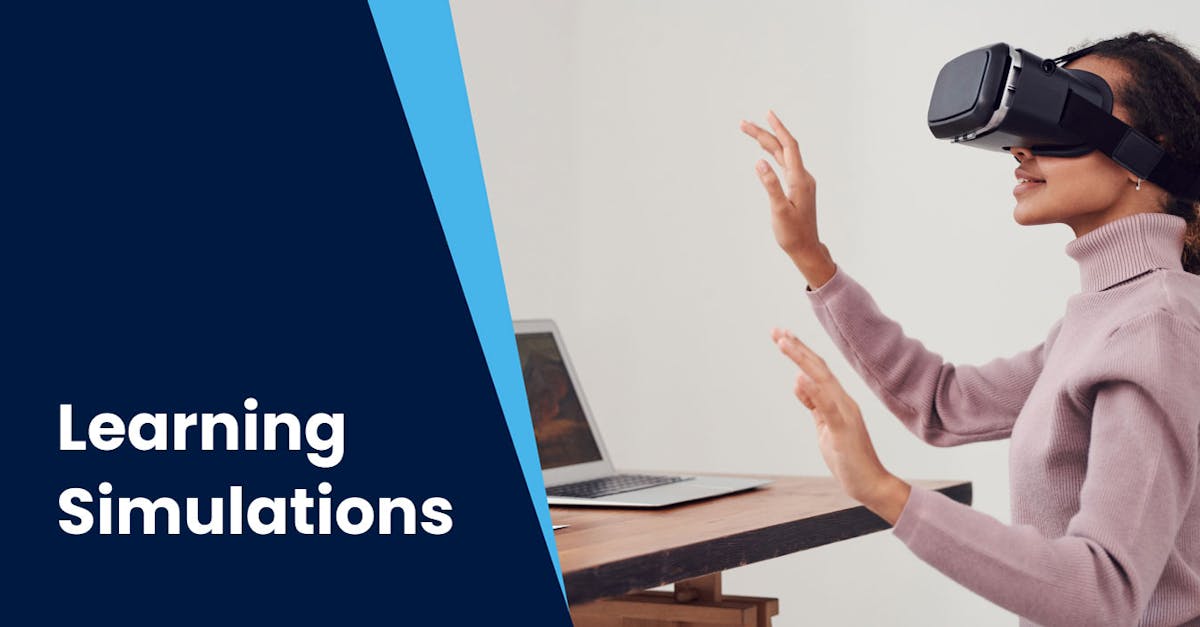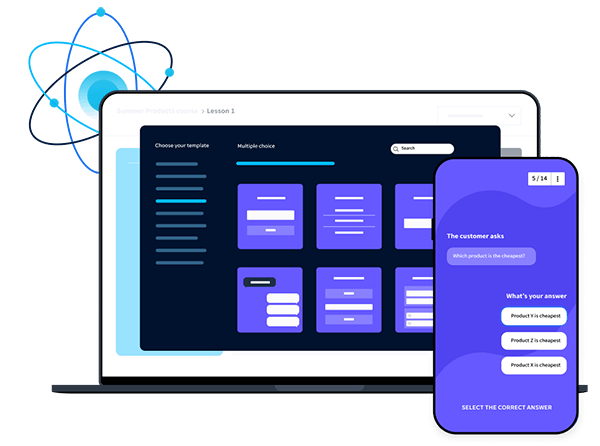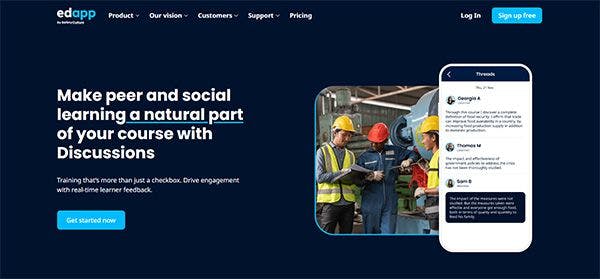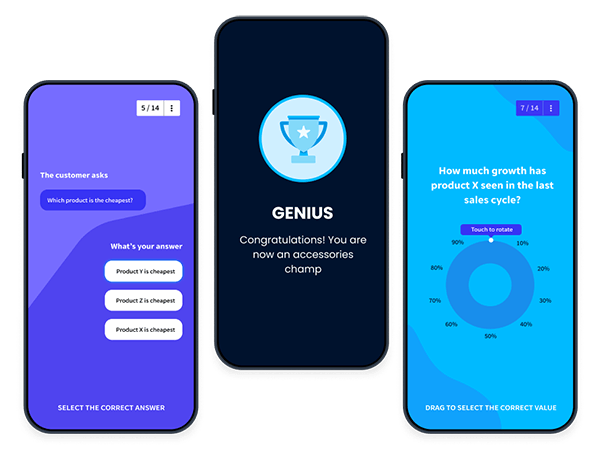Learning Simulations

When training, what’s the next best thing to real-life experience? Learning simulations.
A new twist on an old idea
Learning simulations are not new. There are many examples of people practicing their knowledge and skills in controlled environments.
People work as apprentices and interns on-the-job before they do it ‘for real’. Many high schools and universities require students to train in this way as part of their degree requirements.
Pilots undergo hours of simulated cockpit training before they fly a real airplane with real passengers–good thing too!

One courier, UPS, has nine global training sites. Each site is a ‘city’ with streets, blocks, and challenges such as bad drivers, pedestrians, and problematic neighbors. UPS trainees drive around, delivering parcels within a timeframe, learning to cope with real-life issues.
Yet today, the simulated training process can also be online; thus more convenient, with virtually unlimited space, and more trainee independence.
What are the benefits of learning simulations?
More convenient
A modern learning simulation can take place wherever there is a device with internet connectivity. Any online training which lives in the cloud (such as EdApp courses) is available 24/7. The trainee or learner just needs to access it.

Virtually unlimited space
This training can take place anywhere. So, we do not have to think about how many people can fit into a classroom or conference room. Also, we don’t need to worry about location or travel time. Our devices are with us wherever we are.
More trainee independence
Another huge benefit is that trainers do not need to always be at hand. While a learning simulation should have a F2F component (and even that could be done online via Zoom, Google Hangouts, etc.), the majority of the training can be done by the trainees on their own.
Many enterprises do not have full-time trainers. Rather, people at the workplace pitch in. This takes them away from their other responsibilities. Trainee independence means that trainers can spend less time mentoring without a drop in the quality of the training.

What are the components of a learning simulation?
Learning simulations typically have some or all of the characteristics below. Let’s look at each and see how an LMS such as EdApp can help you build your online simulation.

Authentic situation or location
In reality, we would see the place around us. So when online, we need to ‘set the stage’—putting the trainee on-site, wherever that may be. Images are the key via these useful EdApp templates:
This versatile template can be used to highlight important details in a single image. Hotspots can be configured with headings, text, and narration. This template allows learners to visually explore, for example, new surroundings, a schematic diagram, or the key features of a particular product.
Similar to the Image Waypoints template, hotspots can be configured to show an image upon pressing. A key feature is showing both interior and exterior shots of the same item such as the inside and outside of a building or product.
This template allows you to display up to 7 images on top of each other, creating a 3D effect for learners with accelerometer-enabled devices (most smartphones and tablets).
Decision making
When employees are ‘on the job’ for real, their decisions can have major consequences: “Do the people at Table 6 continue to choose our restaurant?; Does Company X keep choosing us as their cleaning products supplier?; Does my team improve in how well we meet our deadlines?”
In other words, decisions have a large effect on our business relationships. Here are relevant EdApp templates that can help you and your team with decision-making.
This template asks learners to identify the correct relationships between the left and right sides of the screen. For example, trainees see images of customer service or workplace safety situations. They need to match the appropriate customer service action or safety rule. Level up and have them complete sentences about those images—challenging trainees to produce, not just recognize, the correct responses.
This template asks learners to place words in the correct order. This is great for reinforcing correct procedures such as steps to follow when disagreeing with a colleague, handling power tools, or onboarding an employee.
Guided learning
In this component, the trainer and trainee(s) interact directly. Today, teams can use the powers of devices and the cloud to make that interaction more effective.
A big limitation of F2F discussions or guidance is time. No matter how much time you allot, it is usually not enough for everyone to say everything they would like. It’s possible to feel limited as to how much time you can give because you are taking away from ‘regular’ work productivity.
With EdApp’s forum-style discussions feature, trainers can pose questions or topics to their learners and start a peer-to-peer and/or peer-to-trainer conversation. Trainers can reply to and manage threads.

Discussions can be assigned to specific user groups or left on universal access. To keep the experience more ‘human’, emojis are supported, and people can upload images and short videos. Discussions can continue as long as desired because they can be accessed 24/7 whenever the participants have time.
Reflection
When learners take a moment to review their learning, they tend to remember it in a more effective way.
EdApp offers four types of surveys, which can be used to reflect on training or give other types of feedback:
- Free text survey – an open-ended response to a question: great for getting in-depth information
- Multiple choice survey – make a choice from several options: a more guided approach when you are looking for specific responses
- Slider survey – offer number scales as answers rather than text: super for generating percentages
- Quadrant matrix – plot words into different categories along a four-quadrant matrix: get an idea of how several topics/components compare to one another
Role-playing
Even though they are ‘pretend’, role-playing gives trainees an impressively accurate feel for situations, especially challenging ones.
Since short videos can be uploaded, trainees can film themselves roleplaying a situation.
If the task is an assignment, trainers can then watch the upload and give feedback.
If the task is a discussion, peer feedback would also be an option.
Scenarios: solve or react
This component presents a given situation. Trainees must solve the problem or react appropriately. It often includes a timeframe.

Today we understand the many benefits of including games in adult learning. EdApp offers quite a number of game options. These two are well-suited to scenarios:
- Next in Order – This game tests learners’ conceptualization of any procedure with a recommended series of steps. Learners must place the correct steps in order before the clock runs out and can try again if they don’t successfully earn all points.
- Elevator Game – This template challenges learners to select the matching attribute for an image. Learners score more points the closer an image is to its matching attribute. As a result, this game teaches accuracy, i.e., while there can be several correct options, there are more suitable and less suitable ones.
Practice makes better
Practice really does make performance and effectiveness a whole lot better!
Many employers complain that new workers have little or no experience. Learning simulations allow trainees to put their theoretical knowledge to good use. Trainees get the feel of things, so it is not so new to them on the job. This all helps to bridge the gap between ‘in school’ and ‘at work’.
Overall, workers who have had the benefit of using an elearning simulation are more productive and effective more quickly.
Join EdApp for free and make the most of the platform’s free learning simulation templates!
Outside sources
https://www.hurix.com/6-reasons-organization-needs-simulation-training/
Author
